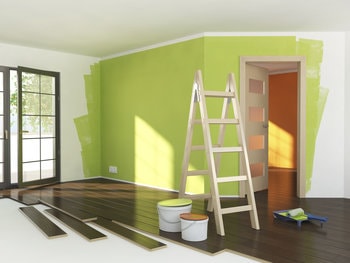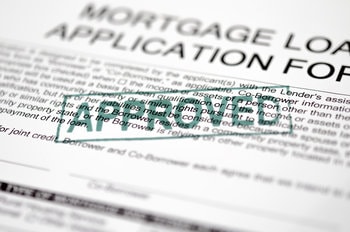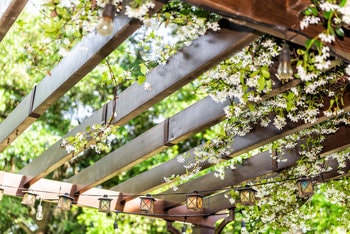 In most areas, it's still a strong seller's market. But that doesn't mean you can count on a buyer paying your desired price without making needed upgrades. Selling a home successfully requires providing what homebuyers want. That means offering in-demand home features and avoiding what homebuyers hate, as well as avoiding other things that turn off potential homebuyers.
In most areas, it's still a strong seller's market. But that doesn't mean you can count on a buyer paying your desired price without making needed upgrades. Selling a home successfully requires providing what homebuyers want. That means offering in-demand home features and avoiding what homebuyers hate, as well as avoiding other things that turn off potential homebuyers.
This can be tricky to determine without help. It pays to consult closely with your real estate agent and do your homework. Learning what home features are popular and will bring a higher return on investment.
Considering refinancing rather than selling? See today's mortgage rates
What the research suggests
The National Association of Home Builders' What Home Buyers Really Want report indicates the home features that are most in demand with today's buyers.
Of course, the NAHB's survey may influence what features get added to newly-constructed homes, and you may not be able to change a lot about the home you're selling. However, it may be useful to highlight any features in the list below that your home can offer to a potential buyer.
Respondents rated the features in the following list as "essential" or "desirable":
- Laundry room
- Patio
- Energy Star windows
- Exterior lighting
- Ceiling fans
- Garage storage
- Front porch
- Hardwood flooring
- Full bath on the main level
- Energy Star appliances
- Walk-in pantry
- Landscaping
- Space for a table in the kitchen
Other popular items fall more in the "nice to have" column, including security cameras and wired home security systems, programmable thermostats, video doorbells, multizone HVAC systems and energy management systems.
There are also some items that have durable popularity in recent years, including
- Quartz or engineered stone for kitchen countertops
- Lighting control systems
- Outdoor fireplaces
- Outdoor kitchens
- Built-in kitchen seating
- Exposed beams
It's also the case that somewhat smaller homes are back in vogue; according to the 2024 study, home buyers are looking for homes around 2,070 square feet, compared to 2,260 square feet 20 years ago.
Related: Renovation vs Relocation (Deciding to Stay or Go)
Why focusing on the right home features is important
Dr. Jessica Lautz is Deputy Chief Economist and Vice President of Research for the National Association of Realtors (NAR). She says it's crucial for sellers to consider amenities wanted by buyers carefully.
"Homebuyer expectations have increased over time. Buyers today want their homes to look like those they see on TV," she says. "They want homes to look beautiful in photos they see online, have great curb appeal as they drive up, and look beautiful once they walk inside."
Jim Kabel, president of Next Stage Design San Jose, agrees.
"You want to ensure that your home isn't outdated. Prospective buyers want modern-looking homes that offer quality, comfort, and convenience. If your home doesn't appear to have those traits, it could linger on the market," he says.
Also, "you have to catch a buyer's attention immediately," Mike Valente, real estate agent, general contractor, and founder of Renovation Sells, says. "The best way to do that is to showcase a design-forward space that looks like it jumped off the page of a magazine."
Lautz says Realtors often know best what improvements sellers should make in their homes before listing.
"Sellers should ask their local Realtor," she adds. "They can tell them the most popular items for the local market and which things they must fix up before selling."
You can also look at online photos of homes for sale in your neighborhood.
"Understanding what the standard is in your community and what buyers are looking for should help influence your decision making. Say prospective buyers care most about a good kitchen. Or say most homes in your neighborhood have pools. If so, consider investing your remodeling dollars in those areas," Kabel notes.
Related: Paying for Home Improvements (75% Can't Do it With Savings)
Home features to consider
Based on NAR's 2025 Remodeling Impact report, Lautz says Realtors believe three particular projects are most appealing to buyers: kitchen upgrades; new roofing and a newly-renovated bathroom.
Other completed projects that appeal most to buyers, per the report, include a freshly-painted home and a completely renovated kitchen.
"Also, anything that's a minor repair should be fixed. Chipped paint should be repainted. Carpets should be cleaned," recommends Lautz. "And Realtors also recommend decluttering the home, performing an entire home cleaning, and removing pets."
"There are also a number of light construction renovations that won't break the bank. These will make a major visual impact and appeal to a larger pool of potential buyers," says Valente. "I recommend painting dark kitchen cabinetry white or a lighter color. Replace dark countertops with seamless countertops in light neutral colors that mimic marble. Sand and stain wood flooring. And modernize light fixtures and hardware."
Kabel seconds many of these suggestions.
Features buyers don't want
Then, there are "upgrades" homebuyers, especially younger buyers, don't want. They include:
- Wall-to-wall carpeting (buyers prefer hardwood and rugs)
- High maintenance landscaping
- Rigid floorplans and formal dining areas (the open concept still rules)
- Trophy, game and media rooms.
- Home offices
These preferences reflect technology today. If your books are on a reader or your phone, you don't need a library. Or an office or home theater if you work and watch movies with a tablet or laptop. And with fewer specialized spaces, homes can be smaller and cheaper.
Related: Selling a Home: What Does Generation Z Want?
Other improvements to ponder
"I also suggest implementing a stand-up enclosed shower," says Kabel. "It should offer spa-like features such as a rainfall showerhead, bench seat, and built-in shelves."
Kabel advises investing in home automation features, too. And he advocates removing oversized and outdated bathtubs.
"In addition, replace outdated white kitchen appliances with stainless steel appliances," Kabel says.
What homebuyers hate, too, are outdated tile backsplashes, dark speckled countertops, track lighting, and dated wallcoverings, adds Valente.
"Today's buyers want modern interiors and sleek lines that gravitate toward a neutral color palette," Valente says. "That's why I also recommend adding a fresh coat of neutral paint to your walls, which can quickly update your home."
Shop mortgage lenders and offers
This article was updated by Keith Gumbinger.



